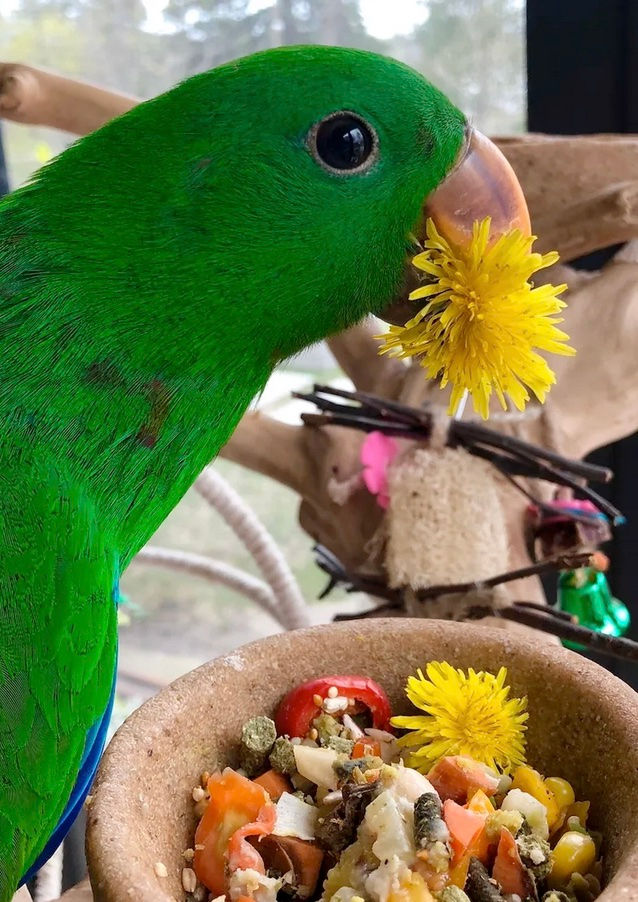So you want an Eclectus Parrot?
- Madison
- Apr 4, 2024
- 2 min read
One of my favorite species of birds that we breed here at the store have to be the Eclectus Parrots. In total, there are 9 subspecies of Eclectus, with Solomon Island and Vosmaeri’s being the most common. Solomon Island Eclectus are naturally found throughout the Solomon Islands east of mainland New Guinea in the Pacific Ocean. The Vosmaeri’s Eclectus are typically found in Indonesia on the islands of Halmahera, Obi, Bacan and Sula in the northern Malukus.
Unlike most parrot species, it is very easy to tell the difference between a male and female Eclectus, making them one of the few truly sexually dimorphic parrots. Males are a vibrant lime green with blue and red under the wings and an orange to yellow “candy corn” beak. This beak can also help determine the health of the males, with a more vibrant color indicating a better diet. Females are an electric red with blue bellies and gorgeous blue eyeliner, unlike their male counterparts they have a solid black beak. Males are more easy going than the females, typically doing better in family situations with much less sass, and their behavior in the wild can explain why. Female Eclectus are extremely hormonal and have the ability to breed year round. With this, they grow a more dominant personality that in the wild helps them protect their nesting spots and offspring. The males tend to be more laid back and relaxed as they aren’t the main protectors of the nesting site.
Eclectus parrots are also prone to fiber and beta-carotene deficiencies and with this means they have more dietary requirements than most birds. For extra fiber intake, introducing the skin of veggies and fruits as well as other types of roughage can be beneficial to their digestive system. With the beta-carotene deficiencies we recommend feeding fruits and veggies that are high in: orange or red colorations (carrots, blueberries, blackberries, cherries, pomegranate seeds, apple chunks, and cranberries are all favorites.) Overall, the diet of an eclectus needs to be more nutrient dense than just a seed diet, so typically sprouts, fresh produce, fruit and non-colored natural pellets like TOPs, are the type of diet that should be provided.







Comments